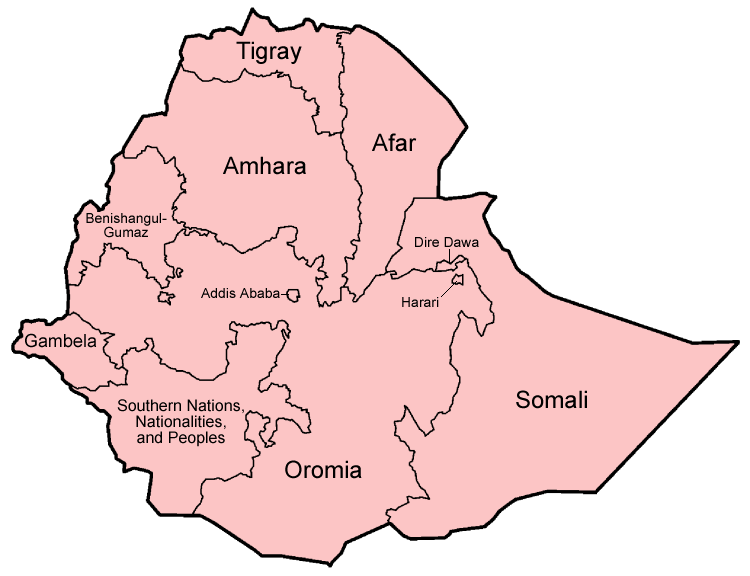Ethiopia
was not a formally colonized state but was ruled over by sequential emperors. Ethiopia
was imperialistic and autocratic. Each emperor brought in various ethnic groups
to reside in the state. In the 19 century though, that all changed. Ethiopia is now known as a federal state which means that they
are a self-government country just like the United States. There are only 4
countries in Africa that claim a federation type of government. Ethiopia is
divided into 9 regional states and 2 chartered cities. A charter city is “a
city which the governing system is defined by the city’s own charter document
rather by the state, provincial regional or national law.” The two charter cities
are Addis Ababa and Dire Dawa. Each region is governed by a council and each
council has a president. Also each president has an executive committee. Ethiopia
has its own constitution which came into effect in 1995. The picture on the left shows the different regional states in Ethiopia and the picture on the right shows all of the federal state countries.
Ethiopia and the country of Somali sit right next to each
other and there has been a lot of tension between the two counties for many
years. Their conflict was not only political but territorial. In the 16th
century Ethiopia invaded the Ogaden region. The two counties went to war three separate
times. After the last was, Somali had a collapse in their central government
and ever since Ethiopia has had the upper hand financially and militarily.
The stability of Ethiopia is at a constant rise. The World
Bank claims that Ethiopia will be a middle class country by the year 2025. Ethiopia
is not opening foreign trade with Sudan, South Sudan, Kenya, and Somalia. Also Ethiopia’s
coffee industry is on the rise as well. Coffee plays a major role in the country’s
economic status. It is said that Ethiopia is going to increase their coffee
exports by 45% in the next couple of years.



No comments:
Post a Comment